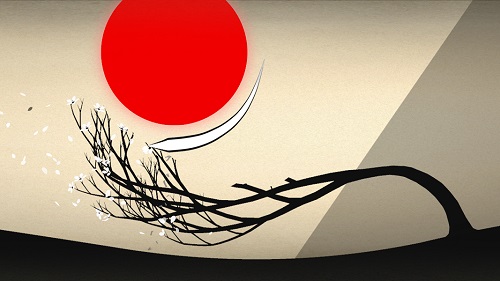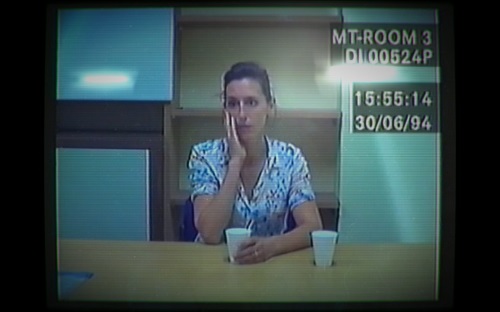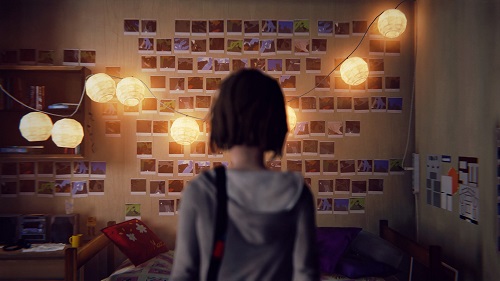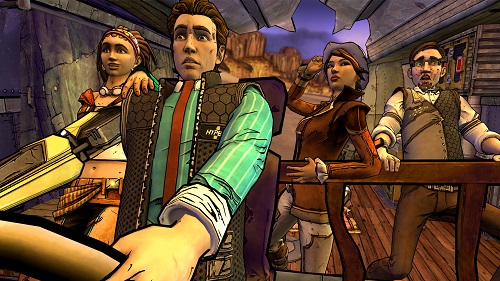May 17, 2016 | Filed under: Game Issues, Recent Posts and tagged with: End of Year, Game of the Year
This is late. Way later than I ever wanted it to be. Though, giving up on the whole video game critic thing for about 4 solid months last year really cut into my being able to present anything. To my satisfaction at least.
Last year, from around the middle to end of July through the end of November I just did not care to take any significant part of the video game critical community. I was just sick of the lot of it. This bled over into not actually playing any video games. Since December is almost exclusively set aside for the Critical Distance end of year features, that meant I have spent the first two months trying to catch up on all the games I did want to play that I thought might make it into such a year-end list. Followed by a few more months of trying to gather the time and energy in between dealing with this year’s projects.
I haven’t played everything. I haven’t played everything worth discussing. I make this statement every year, but never have I felt it to be truer. I didn’t play any AAA video games last year. I don’t own a current console, nor a PC capable of keeping up with new releases anymore. I also don’t see that changing in the near future. So, more than ever, my list be out of the consensus.
I don’t particularly think that’s a bad thing though. If breadth of titles is the sign of a healthy medium, then the cutting of the de facto consensus nominees from my personal list is no real problem. The likes of Bloodborne, Fallout 4, Metal Gear Solid V, Rise of the Tomb Raider, Super Mario Maker and The Witcher III can find their kudos elsewhere. Of course, there are plenty of indie games too I’ve had to cut from consideration due to constraints of money and, most of all, time.
This is my top 10 list from the pool of games I’ve played from 2015.

10. The Beginner’s Guide
The Beginner’s Guide begins as a kind of critical ludic documentary that gently morphs into much more through a harnessing of its meta elements. So much of its material is taking place in the space between what is happening on screen and the player’s own mental comprehension of what is happening. It’s a heady experience about the nature of the creator/audience relationship in art and ethics about said relationship. An experience about the very invisible space where much of the comprehension about it is taking place. For as broad a brush as much of the mainstream coverage paints the game with, what it is actually saying is far more nuanced and specific than it got credit for.
I’d also describe The Beginner’s Guide as a rather cold game. As much as the ending breakdown of narrator Davey Wreden got to people, it is not a game that grabbed me emotionally. I always felt pushed to a distance from both the collection of games individually as well as collectively in the narrative. Instead, it’s a game that tickled my intellectual side for weeks, even months after I played it. It’s a game whose challenge lies in its interpretation rather than its execution.

9. Jotun
Epic is a word thrown around far too much, yet it’s the only word I think appropriately describes Jotun. Jotun‘s story is simple and the stakes of its female Viking character, Thora, are individual. Yet, it chooses to give the adventure a sense of scale akin to Shadow of the Colossus or God of War. The fate of the world is not at stake, nor is it about changing the character’s circumstances. Thora died before the game opens and the whole adventure is her being given a chance by Odin to enter Valhalla. All that is at stake is Thora’s desire for a good death. It’s a struggle that is magnified by how it decides to show its world.
The world is big, yet the camera is pulled in so you can see your character. Everything seems normal, until those times when the camera then pulls out for the full impact of the space and bosses to hit you. The voice over explaining the environments, Thora’s backstory and her culture’s beliefs is minimal. Nearly everything giving context to what is being asked of you is in the actions you must take. I cannot downplay how important the sense of scale is to Jotun. I played it on my PC and feel I did it a disservice that I could not play it on the big screen TV, like it deserves.

8. Technobabylon
I like traditional point-and-click adventure games. That much should be evident by now, though I know I’m in a small minority. Yet, every year of late, a new crop of fantastic entries in the genre are released. Technobabylon is 2015′s example. A classic style science fiction story about a future world as envisioned by our feelings about the present. And while it contains shades of other works of cyberpunk in it, there’s so much originality in its ideas and narrative direction I cannot help but love it.
A serial killer is on the loose in a technocratic libertarian city-state. The city-state is run by a computer managing all the data to facilitate investigations as well as manage the city’s infrastructure. Then one of the detectives on the case gets blackmailed into helping bomb one of the targets, an orphan slum girl addicted to the Trance (future internet). There are obvious class divide messages in Technobabylon, but the game goes beyond such simple platitudes. Eventually, the crimes committed throughout the game are revealed to be the result of the original sin behind the city’s creation. Regardless of whatever other stories are spun, the origin story dictates the very soul of its present existence.

7. Shadowrun: Hong Kong
I liked Shadowrun: Dragonfall enough to make it my game of the year in 2014. Shadowrun: Hong Kong is not here because of that. It may run on the same engine and function off the same solid gameplay foundation, but Hong Kong earned its place on the list for the same reason Dragonfall did: the writing is superb and the story really puts the Shadowrun RPG structure to good use in how to craft a character responding to the situation they are in. I felt I could define my character’s personality thanks to the dialogue options I was afforded and through what could have otherwise been straight mechanical character-building options.
The reason de jour for your hero is their foster father has been kidnapped and you have been marked in coming to look for him. It turns you into a newbie shadowrunner taking missions around the island until you can track him down. However, it’s not just a macguffin as the game takes the time to explore your character’s sense of family with your foster brother and dealing with the sins of the past. Backstory is not just a thing that is talked about but actively affects the course the future will take.

6. Pillars of Eternity
I went back and forth between these two RPGs for their slots on this list. In the end, Pillars of Eternity came out on top, even though I have not beaten it yet. While there is an overarching story and a series of smaller quests leading your hero by the nose through several locations, the themes and identity of the game is baked into every section. It takes time to examine tropes of the genre from the concept of a ‘fantasy world’ and why people would go on adventures in the first place.
Pillars of Eternity is a high fantasy adventure in the old Bioware model. You pick up companions with their own motives and histories along the way in a land that seems to be in some turmoil. The turmoil in this case is a mix of political resentment, both internal and external, due to a recent war, and an existential one, as the populous’ understanding of the soul is undermined. The main driving force of many of the characters is theological, a sphere of human experience games is usually unwilling to go. In the fantasy world, the gods are real, magic is real and all philosophical stakes are not merely theoretical. Even the side quests understand this and flesh themselves out accordingly.

5. Prune
Prune reminds me of Flower in more ways than one. Its purpose is to convey a peaceable sense of nature through a technological device. In this case, you are cutting the branches of a bonzai tree, instead of guiding petals on the wind. The many levels and challenges are spent trying to guide the trees’ growth to the light and with each success light a star in the evening sky. The levels change in theme from open plains to underground caves to a ruined city and industrial rot. There is a narrative at play, but it is allegorical and based in feeling, not anything so concrete as a plot. It portrays and understanding of the feeling of zen through its touch screen swipes.
Simple and experiential games are something I have a hard time lending weight to when describing them. Partly because there isn’t as much to grab onto with fewer details, but mostly because such games require the in the moment emotional resonance to be experienced to get it. It can’t be spoiled, only played.

4. Her Story
Part of my love for Her Story is due to the game doing something new with adventure games. The mystery is taking place inside your head. There are no questions to be answered, no clues uncovered, nor evidence presented. It’s just the simple act of investigation by connecting the dots through an old, poorly made search engine. It allows you to act like a detective, even if the case is over a decade old and the only question that seems to matter to the character (yes you are playing a character) is, ‘why did this happen?’ Not who, what or where.
The other part of my love is the specifics of what is touched on in these police interviews. If you can get past the silliness of the gothic material or the immaterial question of “is there two people or one?” you have a meaningful examination on the nature of identity, the use of stories regarding truth and how the ghosts of the past still haunt us in the modern age. The gothic exists with us into the modern era. There are still ghosts, even if they now live in our machines.

3. Life is Strange
Hella yeah this is in my top three. I apologize for that. While it’s easiest to describe Life is Strange as a young adult story, I personally hesitate to do so. Young adults are the main characters and the story has them dealing with other young adults or authority figures that deal with young adults. However, I feel the material is so thematically multilayered to dissuade such a descriptor. Not to say young adult stories can’t be thematically multilayered, just that the descriptor tends to make people stop looking beyond the entertaining interplay of fun character and maybe after a single layer of subtext. To stop there would do Life is Strange a disservice.
Life is Strange is a Telltale style game that adds a new wrinkle in the form of time travel and uses its implications to drive most of the narrative. It’s a game about balancing short term consequences with long term consequences, and ultimately, learning how you can’t fix everything. In a way it literalizes many of the things one learns as they mature. Max goes in with no ability to see the future and after a time with perfect knowledge of the future internalizes the natural human ability to do so, but more importantly, learns how to not get stuck in the past.

2. SOMA
There’s a point in SOMA where I’m walking on the ocean floor in almost complete darkness, sound muffled thanks to the pressure density, a huge fish monster of the deep swimming overhead. I am alone and it is terrifying. My senses are dulled and I am threatened with destruction by something I can barely see and cannot reason with. All I can do is run and hide. That is SOMA.
Atmosphere has many uses in games. SOMA uses it to underlie the ennui and existential terror of its philosophical implications. The game’s questions of ‘what is identity’ and ‘what is the self’ are never so much in the forefront of your mind as when the game shifts around who you are playing. When you finally experience the dissociation of the self, all those prior audio logs of the station crew’s seeming madness comes into sharp focus. I understood why they took such drastic, seemingly self-destructive action. When confronted with the continuation of the totality of one’s of existence, one can’t help but be a little shaken. SOMA made me afraid of a concept. How can that be anything but grade A science fiction. To be or not to be…indeed.

1. Tales from the Borderlands
I’m glad Telltale can prove they’ve still got it all these years later, at the point where I’ve just about become exhausted with their formula. It is fitting then that the biggest reason for Tales from the Borderlands‘ success if that Telltale was willing to do whatever it needed to do for the game’s story without bending to anything but the game’s own flow and tone. The developers were willing to change anything that needed changing. The game alters its own genre from episode to episode. Trust in what you’re seeing? Pfft, reliable narrators are for chumps. The game gets on better without them. Telltale is even willing to switch up how it implements its tried-and-true formula. By this point, they know what works and, more importantly, how it works and why. A little tweak here, a slightly different presentation of that mechanic and boom, comedy gold.
With so many serious entries on my list, it’s nice to have the top spot go to the irreverent one. Comedy is a lot harder to do than drama and Tales from the Borderlands made me laugh consistency throughout its five episodes. Utilizes the basic building blocks of its own formula the game is funny with not just what it says, but how it says it. And, somehow, during all of that, Tales is still a heartfelt story of flawed characters from different sides of the tracks meeting, making friends and coming to terms with their dreams for the future. Despite its mocking nature, it is never once insincere.
Conclusion
2015 out.


Comments